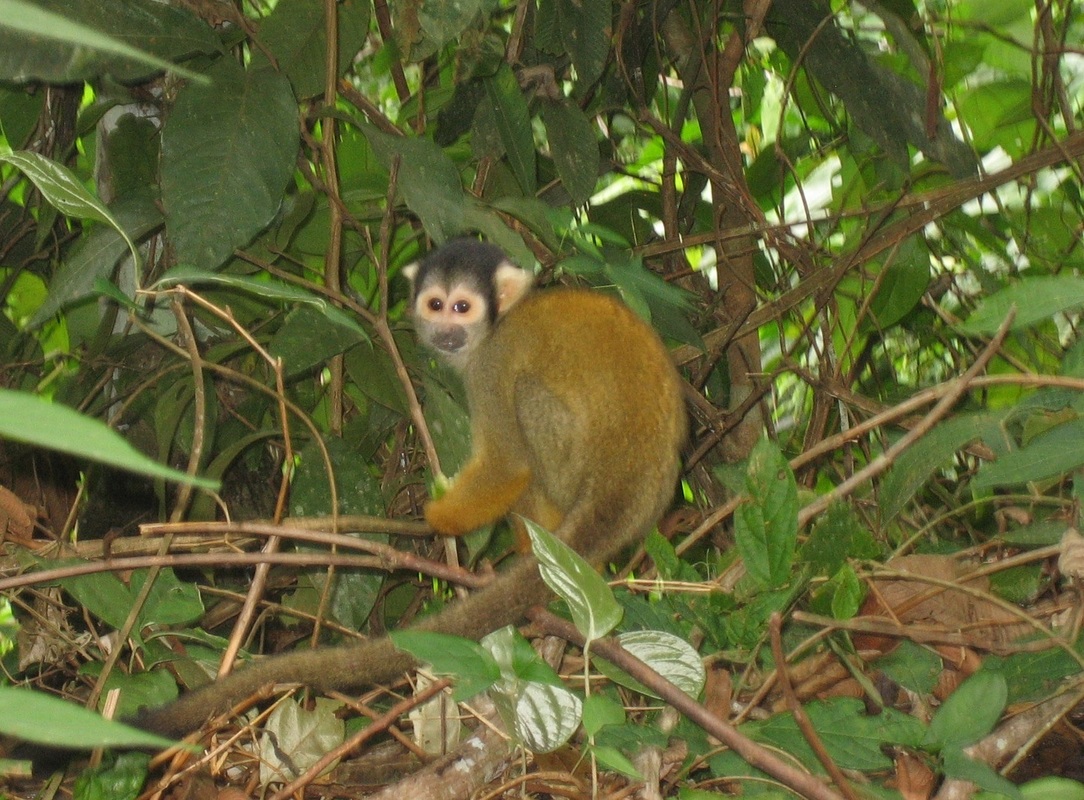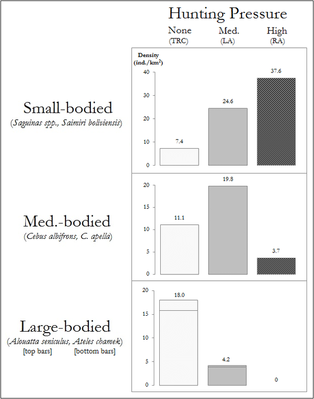Seed Dispersal and Density Compensation in Hunted Primate Communities
|
|
We conducted line transect surveys at three field sites across a gradient of hunting pressure: Reserva Amazónica (heavily hunted), the Los Amigos Biological Station (recovering from past hunting pressure) and the Tambopata Research Center (intact). Using the program Distance, we estimated the abundance of several game and non-game animal species, including all primates. We found that both small- and mid-sized primates exhibited population-level density compensation in response to the extirpation of large primates. Small primate densities at the heavily hunted site reached five times their "natural" densities (take a look at the figure at right). You can read more about this project in our paper here, and in a feature on the conservation news site Mongabay.com here. Research on how these changes are affecting seed dispersal and forest regeneration dynamics is ongoing; for more info, see Varun's project website here.
|


